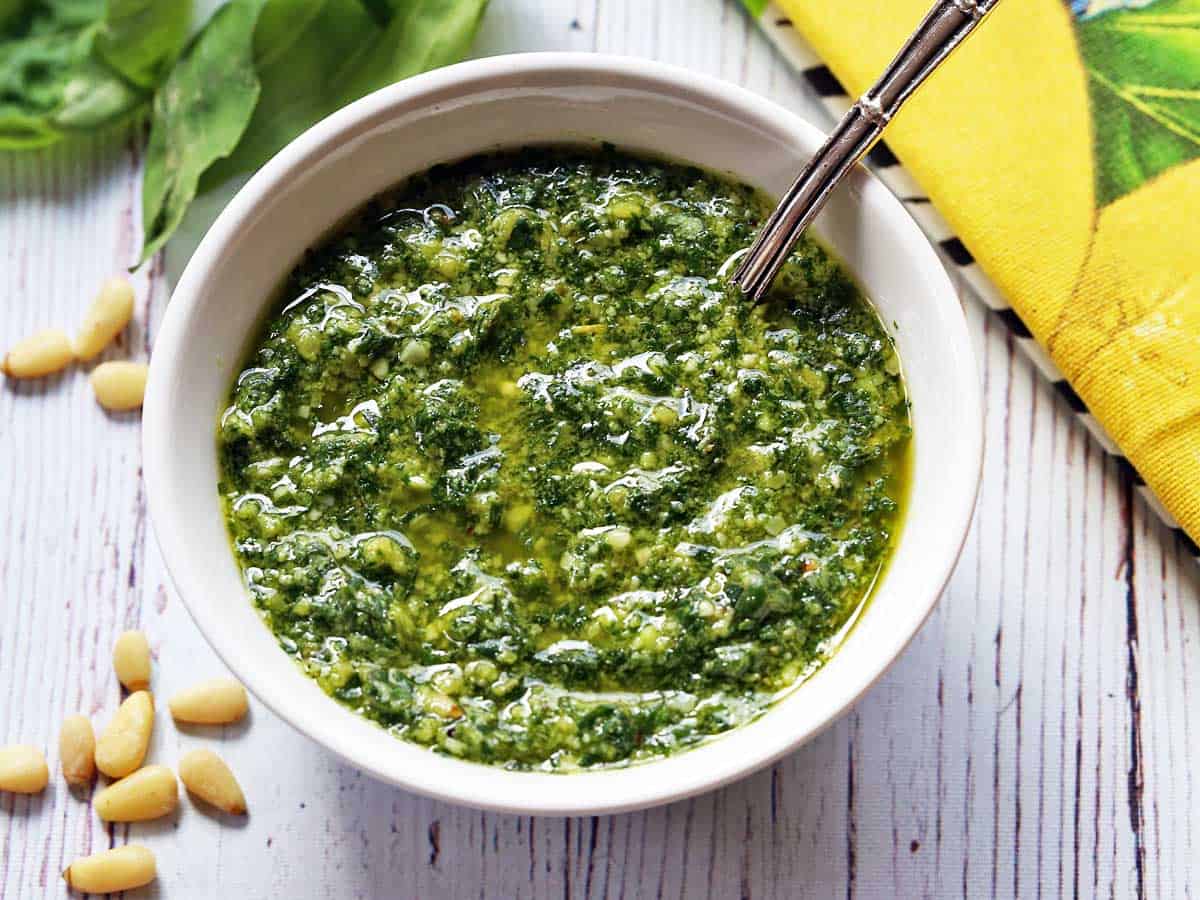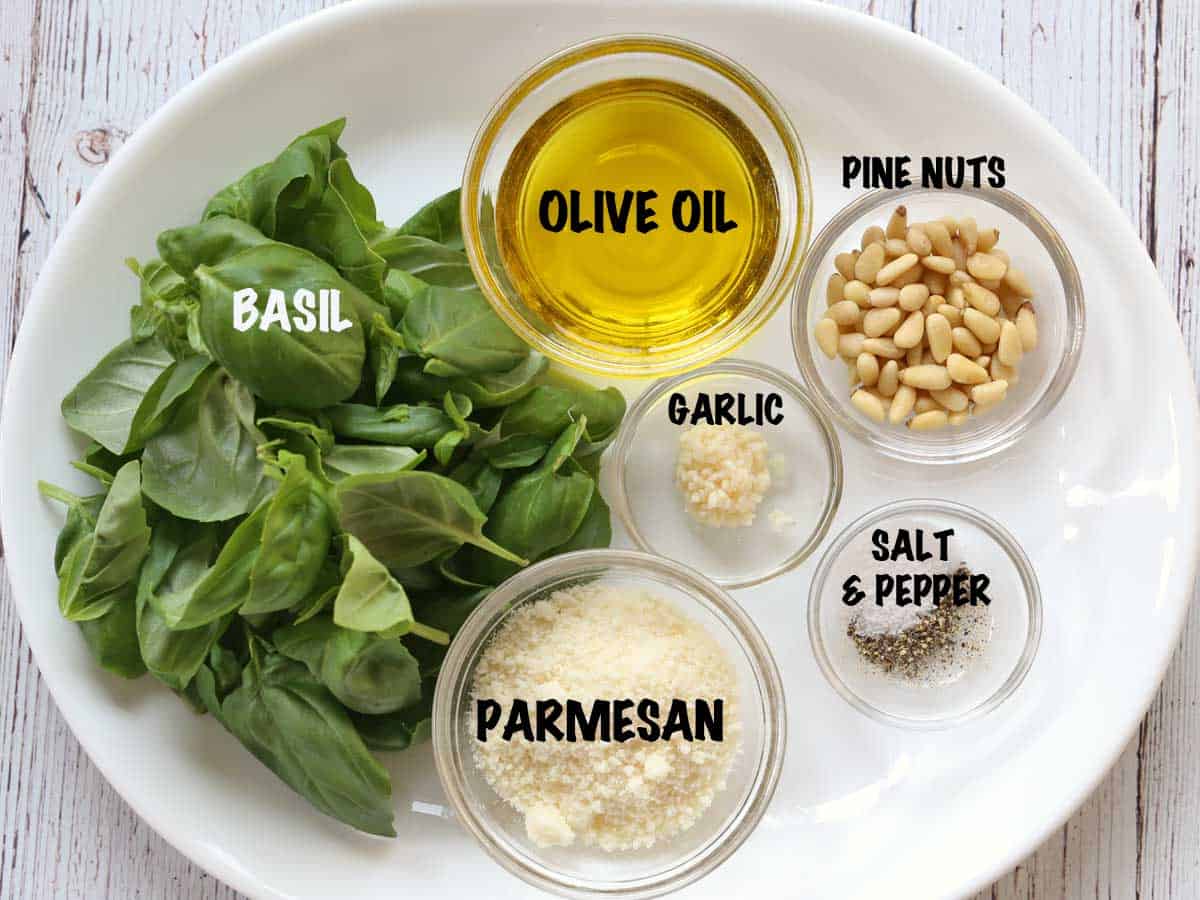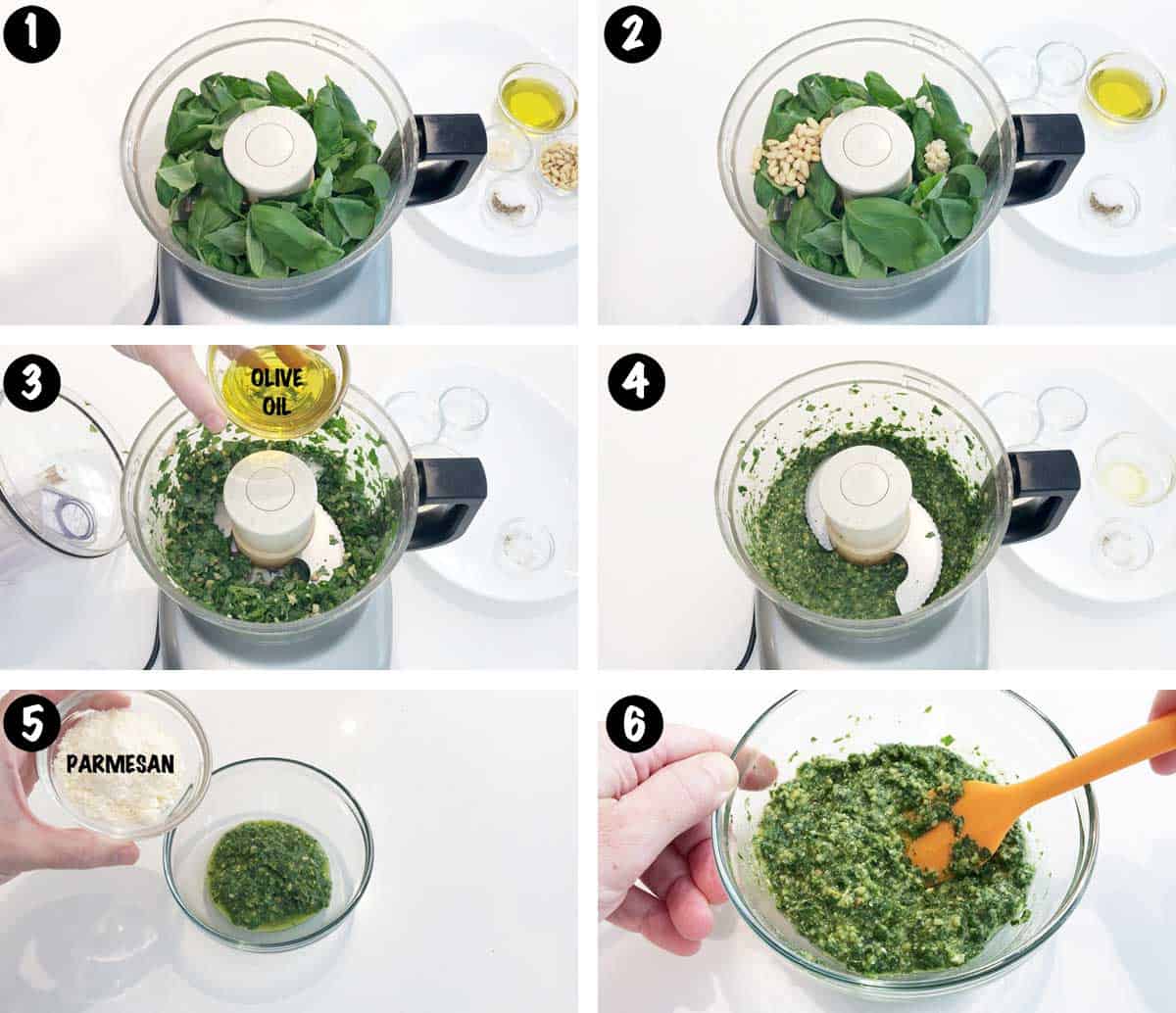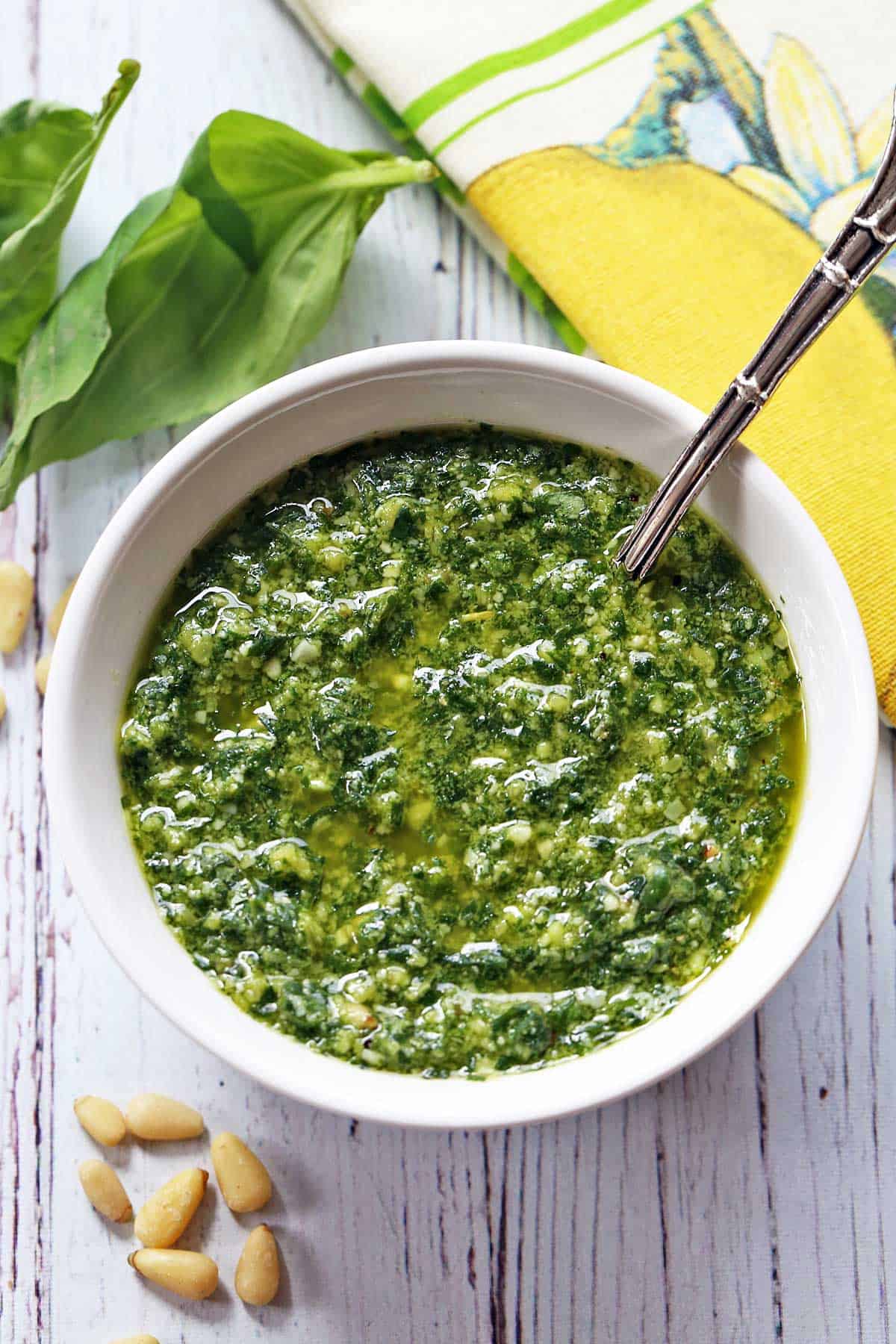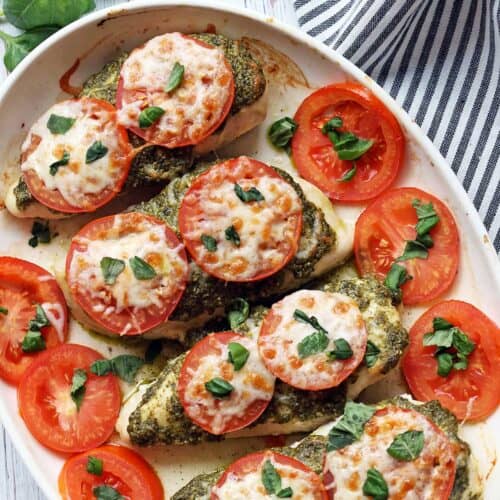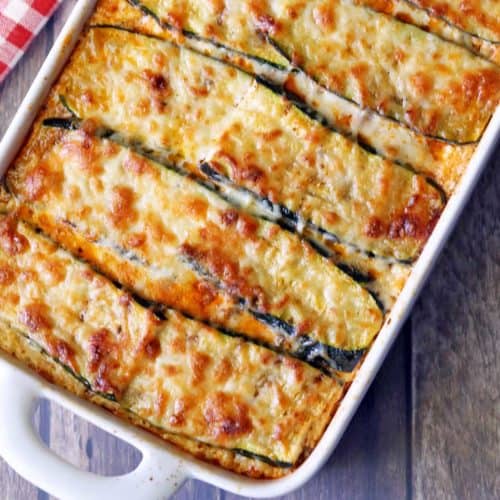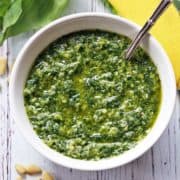This sauce is wonderful on pasta, and just as good as a topping for grilled meats, grilled or baked fish, and vegetables. I love the flavor of basil. One of my favorite appetizers is Caprese salad, and the basil is a big part of why I’m so enamored with this fresh-tasting salad. So it’s no wonder I love basil pesto sauce. This homemade sauce is so delicious and fresh tasting. It’s one of my favorite condiments. Whenever I see a bunch of fragrant, fresh basil leaves at the store, I just have to buy them and make this recipe!
Ingredients
You’ll only need a few simple ingredients to make this tasty sauce. The exact measurements are included in the recipe card below. Here’s an overview of what you’ll need: Fresh basil leaves. You’ll need about 1 cup of them, packed. Wash and dry them before using them. Minced garlic. You can mince a garlic clove or use the stuff that comes in a jar. Pine nuts. Just 2 tablespoons add lots of flavor and a great texture. Kosher salt and black pepper. If using fine salt and not kosher salt, use about half the amount listed. Extra-virgin olive oil. It’s OK to use regular olive oil, but the extra-virgin is tastier. Grated parmesan cheese. Make sure you use finely grated cheese and not coarsely shredded cheese.
Instructions
Making pesto sauce at home is surprisingly easy. Scroll down to the recipe card for detailed instructions. Here are the basic steps: You start by placing basil leaves, garlic, and pine nuts in your food processor. Process for just a few seconds, until coarsely chopped. Next, you add kosher salt, black pepper, and olive oil. Process until smooth and fully combined, about 30 seconds, stopping to scrape the sides with a spatula if needed. Now, transfer the mixture to a bowl and mix in some parmesan cheese. That’s it! The sauce is ready to serve. Although the flavors actually develop more after it’s had some time to rest.
Expert tip
After you’re done mixing the sauce, check its consistency. If the sauce seems too dry, add a tablespoon of olive oil. If it’s too liquid, add a tablespoon of parmesan.
Frequently asked questions
Variations
One way to vary the original recipe is to use cashews instead of pine nuts. You can also try using light olive oil instead of extra-virgin oil, especially if you find that the sauce is bitter. If you’d like to make pesto without basil, you can use spinach. It won’t be as good, but it’s still very tasty. And if you’d like to try a different cheese, you could try finely grated asiago or pecorino romano instead of parmesan.
Serving suggestions
While this sauce is perfect for pasta and pasta salad, it’s also great with proteins. It’s excellent with chicken for example. This simple baked pesto chicken is wonderful. And it also goes well with seafood - check out this easy recipe for pesto shrimp. But you don’t have to incorporate this sauce into a recipe. You can simply use it to top a variety of foods. It makes a superb topping for grilled chicken breast, for skirt steak, and for roasted vegetables.
Storing leftovers
You can keep the leftovers in the fridge, in an airtight container, for up to 5 days. You can also freeze it for 3 months. It’s best to freeze it in ice cube trays or in small containers.
Related recipes
👩🏻🍳 I typically publish a new or an updated recipe once a week. Want these recipes in your inbox? Subscribe! You can unsubscribe at any time.
Recipe card
❤️ Let’s connect! Follow me on Pinterest, Facebook, TikTok, YouTube, Instagram, or Twitter.
